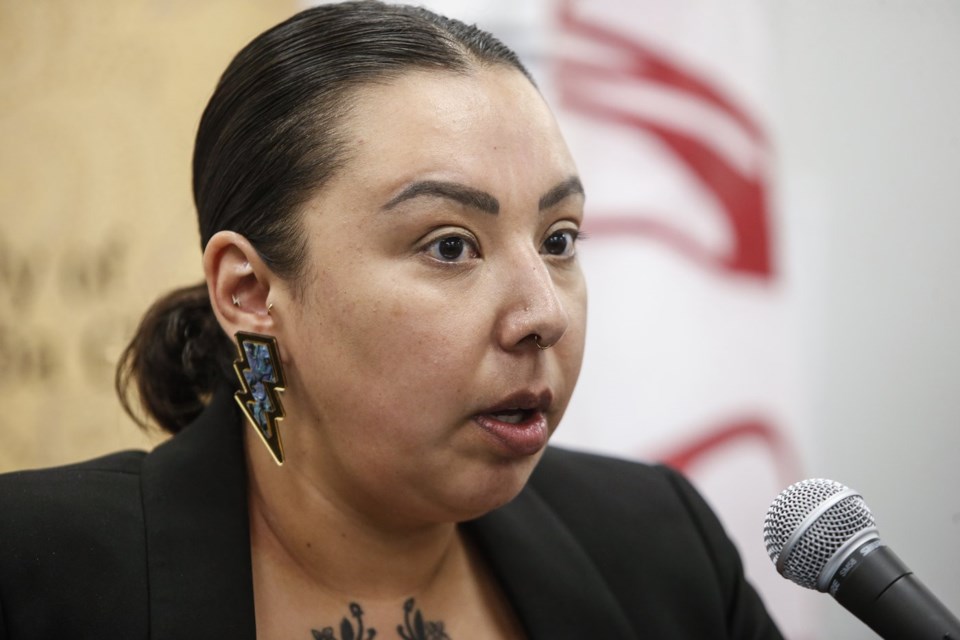WINNIPEG — First Nations leaders in Manitoba say the search of a landfill for the victim of a serial killer must include recovery efforts for another First Nations woman who vanished more than a decade ago.
Tanya Nepinak was last seen in Winnipeg in September 2011 and police believe her body was dumped in a garbage bin and taken to the Brady Road landfill in the city.
"We need to bring Tanya home," Assembly of Manitoba Chiefs Grand Chief Kyra Wilson said in a statement Tuesday.
"We need all levels of government and the Winnipeg Police Service to come together to discuss a plan to bring Tanya Nepinak home."
Police searched a small portion of the landfill for Nepinak in 2012 but were unsuccessful in recovering her remains and called off the search after a week.
Shawn Lamb was charged with second-degree murder in the deaths of Nepinak and two other women. He was convicted of manslaughter in the slayings of Lorna Blacksmith and Carolyn Sinclair but charges against him in Nepinak's death were stayed.
Nepinak's family holds yearly vigils to honour the mother who had ties to Minegoziibe Anishinabe, formerly known as Pine Creek First Nation, located northwest of Winnipeg.
"Tanya comes from a family of Anishinabe leadership,” Minegoziibe Anishinabe Chief Derek Nepinak said in a statement.
"The unresolved tragedy remains present in our family, and her children and future generations deserve closure and a path forward."
Manitoba's government committed last week to searching the landfill for the remains of Ashlee Shingoose, one of four Indigenous women killed by Jeremy Skibicki in 2022. Police have said new information led them to believe Shingoose's remains were taken to the landfill.
The city-run landfill is the same place where the partial remains of Rebecca Contois, another Skibicki victim, were found.
The remains of Morgan Harris and Marcedes Myran, also killed by Skibicki, were recently discovered at the Prairie Green landfill north of Winnipeg.
Details on when a search for Shingoose could start and what it would look like have yet to be determined.
Premier Wab Kinew said he has spoken with Shingoose's parents about their wishes and they want community members to be involved in the search, similar to what was set up at the Prairie Green site for the search of Harris and Myran.
Provincial officials involved in the search at Prairie Green have started communicating with Winnipeg police and city workers on the technical aspects of a dig at the Brady Road landfill.
"We're just starting to wrap our heads around the different challenges here, but the main message is we're going to try," Kinew said Tuesday.
Mike Gordichuk, manager of Solid Waste Services for the city, couldn't speak to the Shingoose case but said garbage trucks going to the Brady site are equipped with GPS tracking that provides data on where a load was picked up and where it was dumped at the landfill.
Data from three years ago, when police believe Shingoose was killed, would still be retrievable, he said.
"It's very likely that we could narrow or pinpoint within a reasonable distance as to where we think that whatever it is that you're searching for is."
The use of technology at the facility has expanded in the past five years, making it easier to track where refuse is deposited.
Gordichuk was not working with the city when Nepinak disappeared and is unaware of what tracking was done at that time. He couldn't comment on whether a search is feasible.
The Assembly of Manitoba Chiefs said Nepinak's family deserves answers so they can get closure.
Kinew said he's open to meeting with Nepinak's family to discuss what they hope to see happen.
This report by The Canadian Press was first published April 1, 2025.
— With files from Steve Lambert
Brittany Hobson, The Canadian Press




